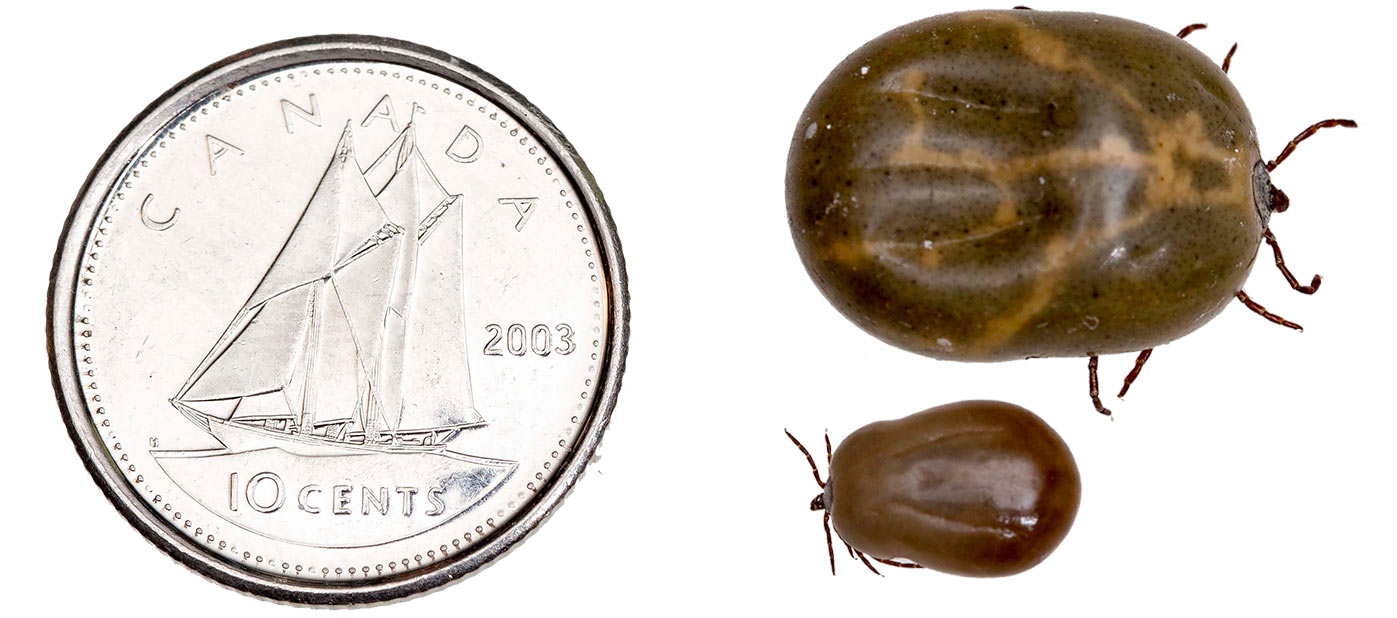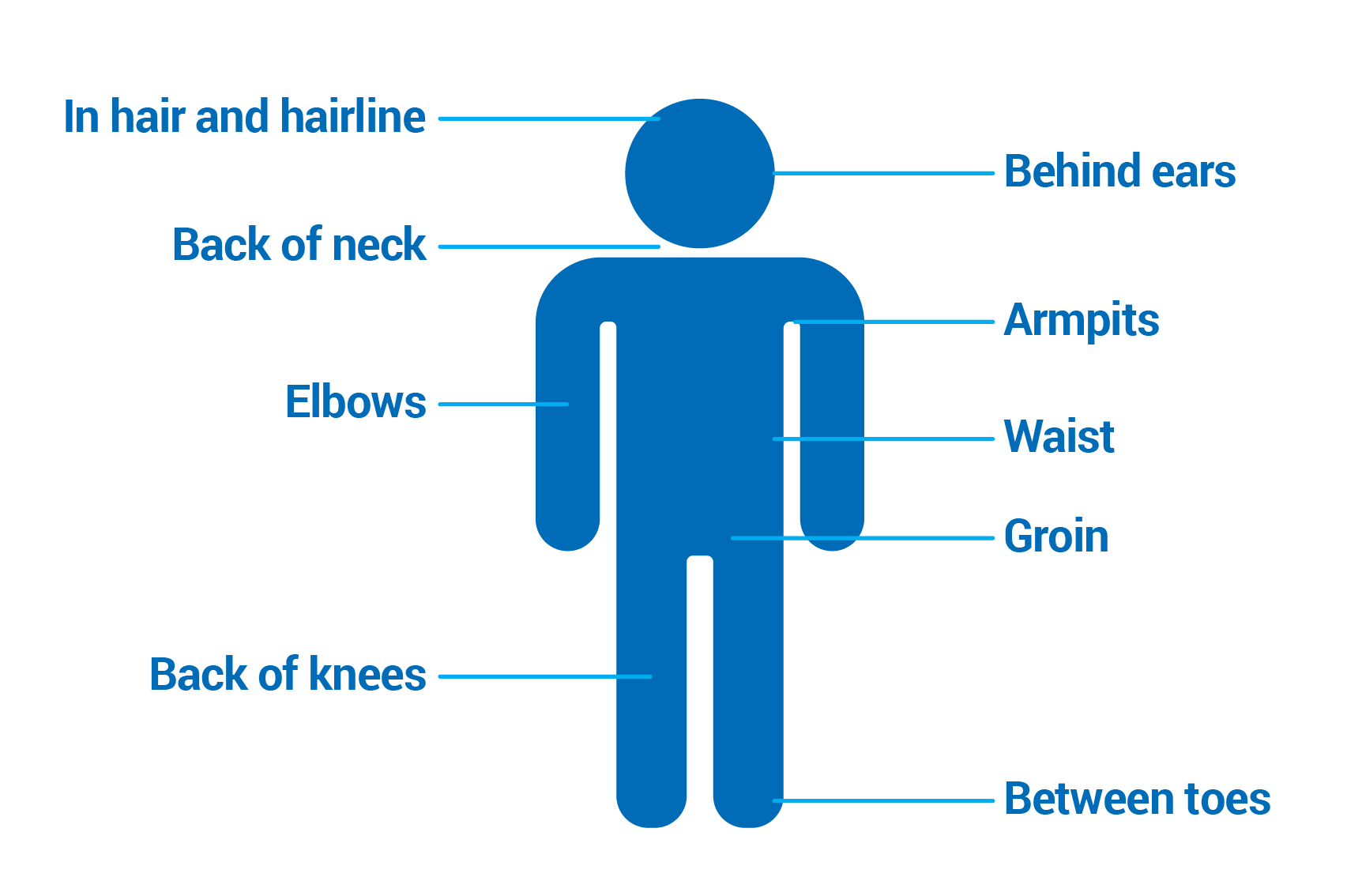Tick safety
 Left to right: Female black legged tick, groundhog tick, dog tick.
Left to right: Female black legged tick, groundhog tick, dog tick.
 Top to bottom: engorged female dog tick, engorged female black legged tick.
Top to bottom: engorged female dog tick, engorged female black legged tick.
Nova Scotia has high rates of Lyme disease. It’s also seeing more cases of Anaplasmosis and there have been a few cases of Babesiosis. There are no known cases of Powassan virus in the province.
Ticks like moist and humid environments and can be found in or near woods, shrubs, leaf litter, long grass, urban parks and gardens. They can be very small, which makes them hard to spot and their bites don’t hurt, which makes it difficult to know when you’ve been bitten.
Reduce your risk of tick-borne illnesses
You can reduce your risk of getting a tick-borne illness if you:
- wear long pants and long sleeves in areas likely to have ticks
- wear light coloured clothing (light colours make it easier to see ticks)
- wear enclosed shoes and tuck your pants into your socks
- walk on well-travelled paths, avoiding long grass and vegetation
- apply insect repellents approved by Health Canada to exposed skin and clothes (make sure you follow directions on the package carefully)
You can also wear permethrin-treated clothing to reduce your risk of a tick bite. Permethrin-treated clothing repels ticks when they come in contact with it (permethrin-treated clothing is approved for use in Canada for those 16 and older).
Check for ticks
Make sure you check for ticks after being outside. You should:
- check yourself and your family for ticks
- have a bath or shower within 2 hours of coming inside (this makes it easier to spot ticks and wash off unattached ticks)
- remember to check:
- around ears
- behind knees
- in hair
- between the legs and in the groin area
- around the waist
- make tick checks part of your daily routine if you have pets that spend time outside (dogs can’t transmit tick-borne illnesses to people, but ticks can enter your home on your pet and move onto people)
- wash and dry clothing you wore outside, then put the clothing in a dryer on high heat for at least 10 minutes to kill any remaining ticks

Remove a tick safely
To remove ticks safely from your skin, do the following
- carefully grab the tick with tweezers (the pointier, the better) as close to the skin as possible
- gently and slowly pull the tick straight out of the skin; don’t jerk, twist or squeeze it
- clean the area of the bite with soap and water or alcohol hand sanitizer once you’ve removed the tick
Make a note of the date and where on the body the bite occurred. This is important if you or a loved one begin to feel unwell.
Learn more: How to properly remove a tick
Tick identification and disposing of ticks
Blacklegged ticks transmit tick-borne illnesses in Nova Scotia, so it’s important to identify what type of tick bit you. eTick.ca is a free service that can identify a type of tick within about 24 hours.
Keep in mind that not all blacklegged ticks carry disease and not all blacklegged ticks have black legs.
To dispose of a tick, drown the tick in rubbing alcohol or freeze it for several days. Don’t crush ticks with exposed fingers.
Signs and symptoms of tick-borne illnesses
You may not notice a tick bite right away. No matter how long the tick was attached, be sure to watch for signs and symptoms of tick-borne illnesses. Symptoms may appear in stages or over time.
Signs and symptoms include:
- rash (sometimes shaped like a bull's eye)
- fever or chills
- nausea and vomiting
- fatigue
- muscle aches
- joint pain
- headaches
See a healthcare provider if you show symptoms and you’ve:
- had a tick on your body
- been outdoors, especially in wooded areas, forests or areas where long grasses and shrubs are present
